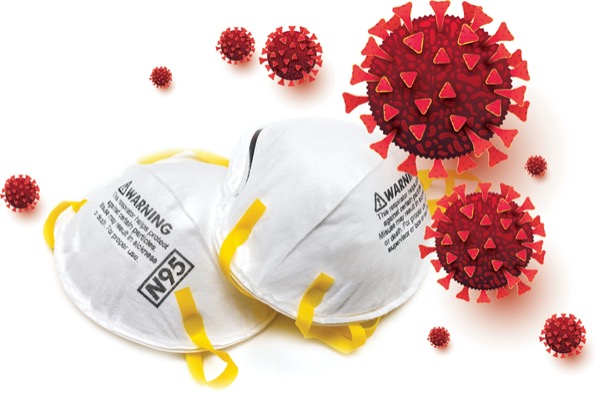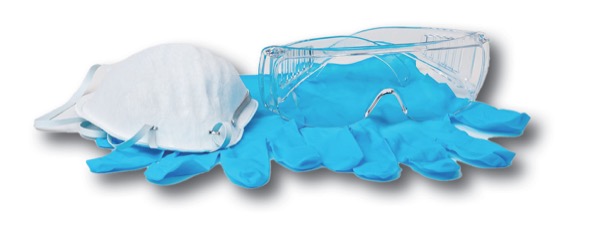Will endoscopists keep their new habits when it comes to personal protective equipment (PPE) once the COVID-19 pandemic has ended? A survey of Canadian clinicians suggests they will.
A total of 77 respondents from across Canada, the majority of them gastroenterologists (70.1%), completed the survey, which was published in the Journal of the Canadian Association of Gastroenterology (2021;4[suppl 1]:31-32). The investigators found that most endoscopists (91.0%-93.9%) wore gowns in the prepandemic era and all wore gloves, but generally less than one-third wore surgical masks (20.9%-31.3%) and face shields (13.4%-33.9%). Even fewer wore eye protection (13.4%-21.3%) or hair protection (11.1%-12.5%), and a tiny minority used N95 masks (1.5%-3.2%).
Increased PPE Use Will Continue
However, the surveyed endoscopists reported that they planned to continue with the more rigorous PPE practices they adopted during the pandemic when things return to a “new normal.” All endoscopists said they would fully gown and glove, with the majority indicating they will continue wearing surgical masks (87.7%-90.5%), face shields (57.8%-75.0%), and hair protection (50.8%-53.8%). Universal use of N95 masks will decrease, although it still will be far more common than before the pandemic (6.5%-23.7%), as will eye protection (36.5%-40.0%).
“Over half of the respondents reported changing their practice from no masking prepandemic to implementing routine masking,” the investigators said. “Ongoing studies comparing the rates of transmission of hospital-acquired infections in the setting of endoscopy are needed to develop a new post-pandemic PPE consensus.”
Many clinicians expected endoscopists in the United States to make the same long-term PPE changes as their northern neighbors. “For many practices, this was a wake-up call,” said Partha Nandi, the president and chief medical officer of Michigan-based Pinnacle GI Partners. “We would always use surgical masks before, but now we universally use N95 masks. We all used gowns, but now we specifically provide uniform staff training in donning and doffing. We didn’t uniformly double glove, nor did we always use shoe covers, and now we are. At least for the rest of this year, and probably until next spring, I anticipate continuing with this level of PPE.”
Industry expert Scott Fraser, the founding partner of the consultancy Fraser Healthcare and a board member at Pinnacle GI Partners, said many GI practices used a relatively minimal level of PPE before the pandemic started. “Given the fact that GIs are around blood, bile and stool every single day, it was somewhat alarming,” he said. “They would wear gloves and some form of gown, but not usually a level 3–type OR gown that fluids can’t permeate, and very rarely face shields or masks.”
At Austin Gastroenterology, in Texas, all staff—including physicians, technicians, nurses and nurse anesthetists—always have worn level 3 gowns, and the technicians and physicians always have worn gloves, gastroenterologist Harish Gagneja, MD, said. “But relatively few employed a surgical mask and even fewer any kind of face shield. At the beginning of the pandemic, we instituted a 100% strict rule of N95 masks for everyone in the practice, and since last March, we have completed over 15,000 procedures with no known transmissions of COVID-19.”
With the entire practice now vaccinated, clinicians and staff members are permitted to return to using surgical masks, but Dr. Gagneja, a member of the editorial board of Gastroenterology & Endoscopy News, predicted that everyone will continue to use N95 masks for the foreseeable future. “At some point after we are much more sure the pandemic is waning—perhaps in five or six months—some of the techs and nurses may return to surgical masks, but most physicians I talk to say they will stick with the N95 masks for now.”
Rajiv Sharma, MD, a gastroenterologist at Digestive Health Associates in Terre Haute, Ind., agreed. “We need to drive home the point that you have to be more careful protecting yourself in every way. I think everyone is now more cognizant of the importance of PPE in GI procedures and will continue to use appropriate gowns, masks and gloves aggressively to be safe.”
Economic Considerations
Increased consistent use of PPE is a trend that will add to operational costs for ambulatory surgery centers, Mr. Fraser noted. “If I’m a physician owner, what level of PPE do I feel safe with that’s not going to break the bank, and can I work with my commercial payors to get some type of supplemental coverage or relief? I haven’t heard about being able to do this so far, but I hope that the economics and reimbursement structure will support continued improved PPE practices in a post-pandemic world.”
—Gina Shaw
This article is from the September 2021 print issue.



